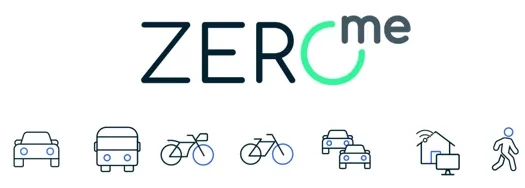April 2024 Tech Upload
| The NEW Digital Alliance would like to thank Northeast Wisconsin Technical College and TEKsystems for their support as an Strategic Level investor! |  |
NEW Digital News
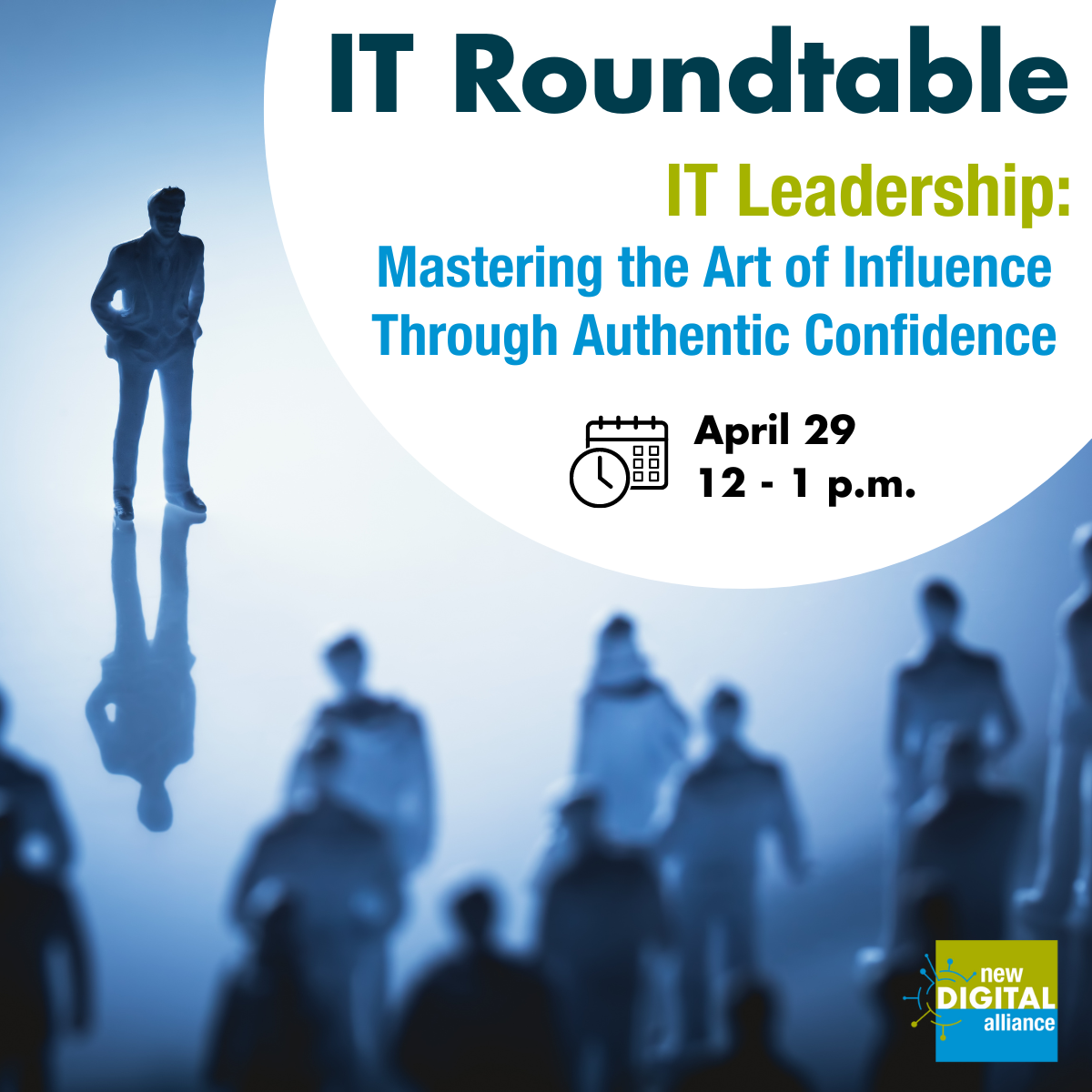
Registration is open! Join us for an IT Leadership conversation on “Mastering the Art of Influence Through Authentic Confidence.” Our April IT Roundtable brings Ben Fauske, founder & CEO of RISE Leadership, who will be sharing the latest research and strategies on learning how to find, lead and coach with Authentic Confidence.
Embracing the Future of AI-Powered Marketing with StellarBlue.ai
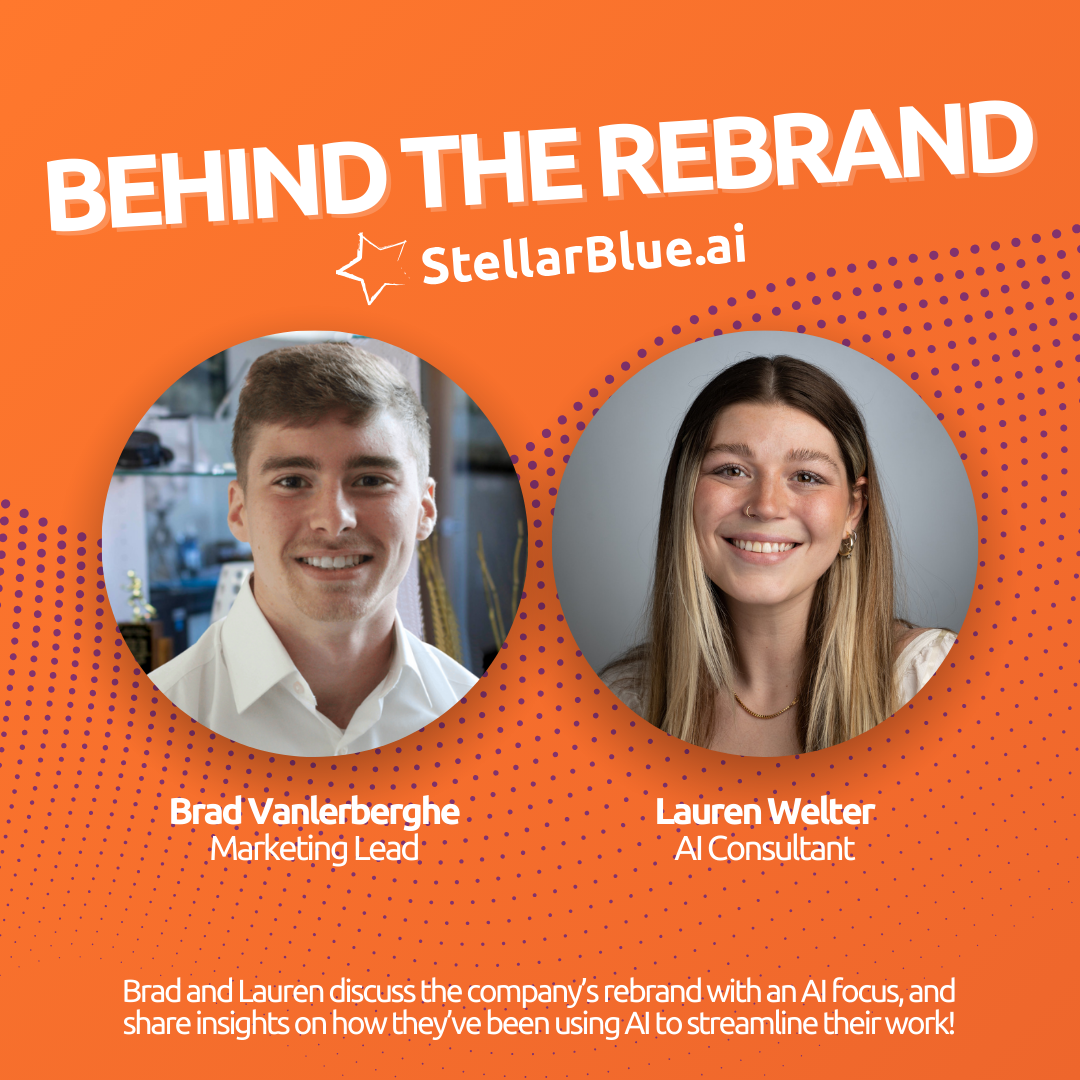
We at StellarBlue.ai recently underwent a rebrand to reflect our priorities with developing and deploying artificial intelligence (AI) solutions. Our marketing team has been working to integrate AI into our daily routine and align our efforts for Stellar Blue’s vision for the future.
Embracing AI for Enhanced Marketing Creativity and Efficiency:
One of the key takeaways from our marketing team is the emphasis on using AI as a tool to empower creativity, not replace it.
“We start looking for tools that can accomplish repetitive tasks, help with brainstorming and idea generation. Finding if there are tools out there that will help us accomplish our work better and faster.”
Our goal as a marketing department is to leverage AI to free up time for strategic thinking and the human-centered aspects of marketing, the things we do best.
Maintaining the Human Touch:
Our marketing team believes the importance of maintaining a consistent brand voice and personality even while leveraging AI tools. We achieve this through careful selection of tools and a human-in-the-loop approach:
“We use a variety of internal tools in which we are able to upload our own documents and past content and train the AI to utilize our unique brand voice.” Brad Vanlerberghe further emphasizes,
“Any content that starts with AI ends with our own editing and thoughts added into it. Our team now has more time to curate pieces of content with big picture ideas.”
How Direct Liquid Cooling is Helping Providers Meet Rising Colocation Demand

Involta, an innovative agent of change and award-winning colocation, hybrid IT and managed services firm, is leading the charge in addressing the cooling challenges brought forth by rising high-performance demands. In the age of nonstop technology advancements, the need to meet high-performance demands, especially in data centers that require efficient processing and high-performance computing (HPC), is growing faster than ever.
But with high-performance demands come high power demands—and more heat. And with more heat comes the need for effective, efficient cooling strategies. Many traditional data center air cooling systems are no longer sufficient for these high-performance demands, requiring data center operators to seek out more modern, innovative cooling methods, like Direct Liquid Cooling.
Direct Liquid Cooling (DLC) is a modern cooling system designed to manage the temperatures of IT equipment, preventing overheating and improving energy consumption in high-power, high-performance, high-density data centers.
Contrary to traditional air cooling strategies, DLC uses liquid coolant pumped through a piping system to absorb heat generated by IT equipment through convection. Once heated, that liquid solution flows through a heat exchanger to cool before recirculating to the equipment. It plays a significant role in regulating the temperature of chipsets, a vital data center component that requires a specific temperature range.
When used in conjunction with—or in replacement of—traditional air cooling systems, DLC improves power usage effectiveness (PUE) and energy consumption in high-density data centers. With more precise cooling capabilities, DLC uses less water than traditional cooling, resulting in significantly increased energy efficiency and lower operating costs for data centers.
As a result, Involta has joined other innovative data center providers in adopting this cooling technology, implementing modern DLC methods to supplement—or in some cases, replace—air cooling methods and improve energy efficiency. DLC, in combination with other sustainable initiatives, such as installing sensor-controlled LED lighting and replacing end-of-life equipment with high-efficiency alternatives, has led Involta to achieve a 50% increase in energy efficiency since opening its flagship facility in 2008.
Join TEALS and Make a Lasting Impact on High School Computer Science Education!
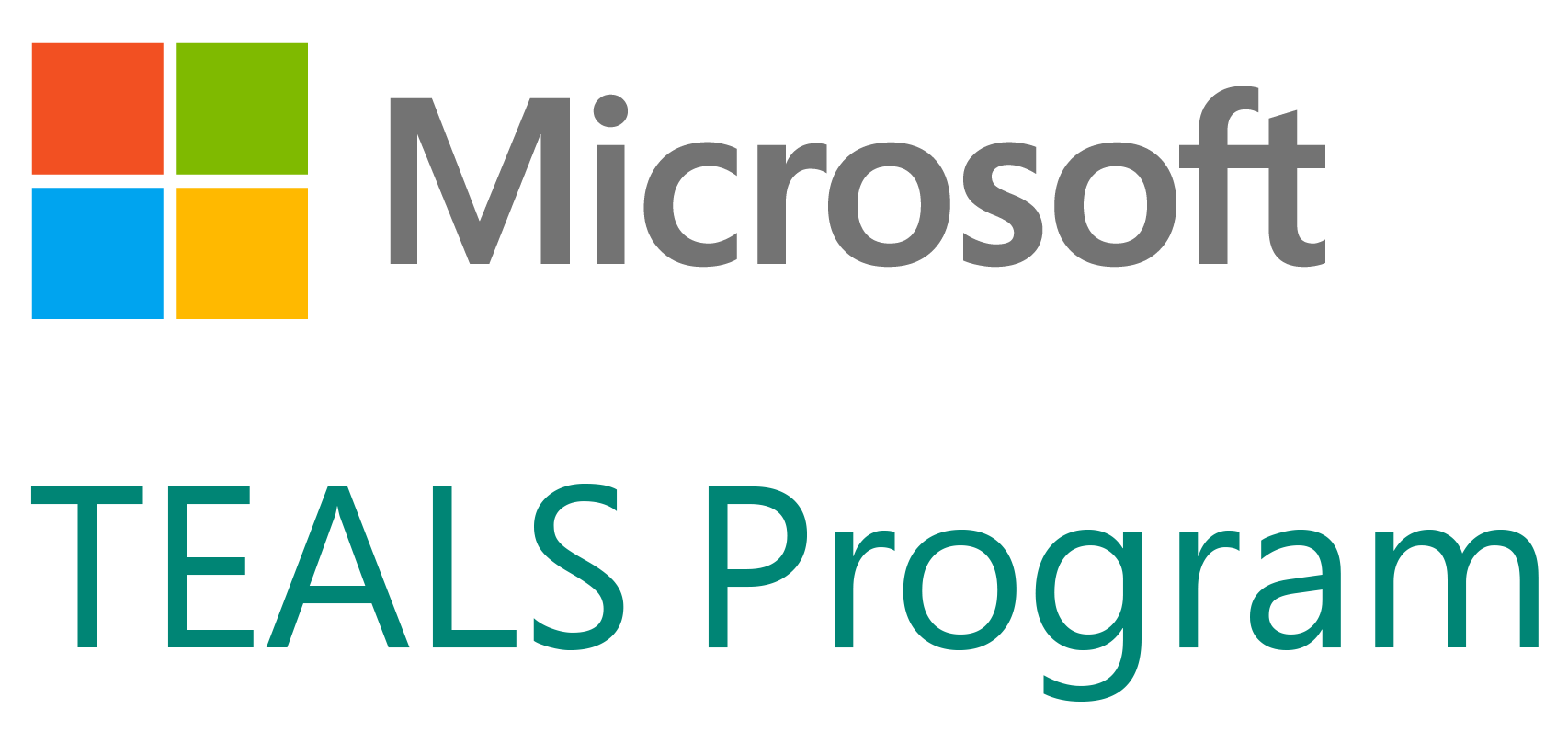 Technology Education and Learning Support (TEALS) is a Microsoft Philanthropies program that brings computer science (CS) to high school students all over the country. Since 2009, the TEALS Program has helped over 100,000 students to receive CS education, and we are looking to make this number even bigger – that’s where you come in!
Technology Education and Learning Support (TEALS) is a Microsoft Philanthropies program that brings computer science (CS) to high school students all over the country. Since 2009, the TEALS Program has helped over 100,000 students to receive CS education, and we are looking to make this number even bigger – that’s where you come in!
The TEALS Program is only possible because of volunteers with skills like yours. Tech industry volunteers make a lasting impact on the next generation of innovators by helping students build their CS foundation. So, why not join?
- Empower students with access to critical skills
- Use your tech knowledge to help high school teachers teach CS
- Help increase access to CS education
Together we can make a difference for an inclusive future workforce and ensure all students have access to digital skills. Get started today.
- Attend a TEALS info session: aka.ms/TEALSevent
- Connect with the TEALS team: Kahina Cargile, kahina@TEALSK12.org
- Apply to volunteer by May 31st: aka.ms/JoinTEALS
Why is Most Electronic Waste Not Recycled?
We live in an age of rapid technological advancement. Each year, new smartphones, laptops, tablets, and countless other gadgets take center stage, promising greater power and more features. But this relentless innovation comes at a price: electronic waste, or e-waste. Discarded or obsolete electronics create one of the fastest-growing waste streams in the world. It’s estimated that globally we generate over 50 million tons of e-waste every year. Sadly, shockingly little of it is handled responsibly.
Why Don’t We Recycle More E-Waste?
With heightened awareness of environmental issues, you might assume that most e-waste finds its way to recycling facilities. Unfortunately, the reality is far from ideal. Let’s break down the key reasons why recycling electronics remains such a challenge:
HAZARDOUS MATERIALS
Packed inside your old TV, computer, or phone are a host of potentially toxic substances. Lead, mercury, cadmium, and flame retardants can leach into soil and water if e-waste ends up in landfills. Specialized processes are needed to handle these hazardous materials safely, adding to the cost and complexity of recycling electronics.
COMPLEX DESIGNS
Unlike easily recyclable materials like paper or some plastics, electronic devices are a complicated mix of different metals, plastics, and glass. Disassembling these devices into individual components can be highly labor-intensive and time-consuming. This process isn’t always economically viable, particularly when dealing with older or cheaper electronics.
Regional News
Innovation in NEW: Breakthrough Launches Sustainability Employee Engagement App
Climate change represents one of the most pressing challenges of our time. According to the Intergovernmental Panel on Climate Change, global temperatures have risen by approximately 1.5 degrees Celsius above pre-industrial levels, with each successive decade since the 1980s being hotter than the last. These changes are driving more frequent and extreme weather events, leading to devastating impacts. The urgency for action is clear: companies and individuals must prioritize sustainable practices to mitigate the escalating effects of climate change.
Sustainability and Employee Engagement
Employee engagement is a cornerstone of any company’s sustainability mission, serving as a catalyst for collective action. Engaged employees actively participate in driving company sustainability goals forward by contributing innovative ideas, adopting eco-friendly practices, and championing sustainability initiatives within their teams. By fostering a culture of engagement that empowers employees to make a difference, companies can achieve their sustainability objectives more effectively, reduce environmental impact, and create a lasting impact on the planet and society.
Sustainability Beyond the Workplace
Employees who are engaged in sustainability practices at work often carry these values into their daily routines, making eco-conscious choices in their homes, communities, and personal lifestyles. They may advocate for environmental causes, participate in volunteer efforts, and inspire others to adopt sustainable practices. This holistic approach to sustainability not only benefits the company’s mission but also contributes to a broader societal impact, fostering a culture of environmental responsibility and stewardship that extends far beyond the workplace walls.
Sustainability Drives Talent Attraction and Retention
Sustainability has also become an increasingly important factor for HR departments to consider when attracting and retaining talent. Surveys reveal that 71% of workers under the age of 35 cite sustainability as a crucial consideration when choosing an employer. Moreover, 42% of Gen Z and Millennial employees have either changed jobs or plan to do so due to climate concerns, highlighting the profound impact that sustainability practices can have on employee attraction and retention. These statistics underscore the importance for HR leaders to champion sustainability efforts within organizations, not only to attract top talent but also to cultivate a culture of environmental responsibility that resonates with employees across all levels.
Sheboygan County High School Work Based Learning Hiring and Career Fair
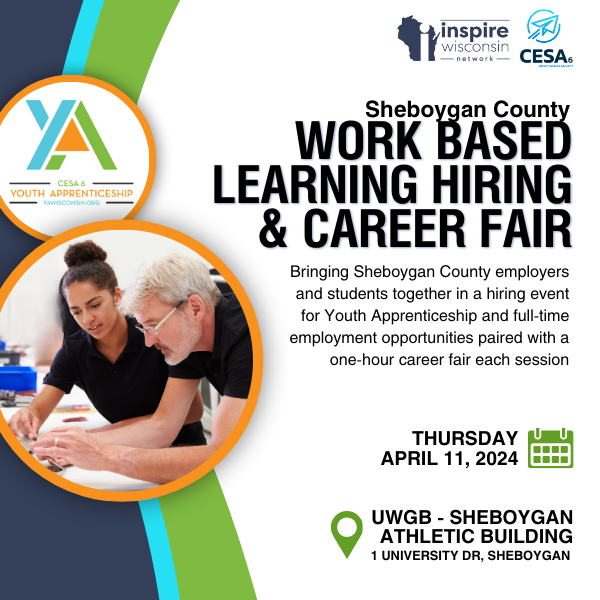
Come connect with potential high school age employees through the Work Based Learning Hiring and Career Fair on April 11, 2024 at the UWGB Sheboygan Campus. The event is being hosted in partnership between Inspire Wisconsin and CESA 6 Youth Apprenticeship.
This event provides a fantastic opportunity for your organization to interview talented and motivated young individuals eager to embark on their professional journey through Youth Apprenticeship and those that are ready to begin careers as new graduates! We believe that your involvement in this event will contribute significantly to the success of our Youth Apprenticeship Program, Local Work Based Learning and general career awareness of students in the Sheboygan County area.
The schedule will be as follows. Please note the specific industries for each session:
Session 1: 8-11 am
(Auto Tech, Carpentry, Electrical, Engineering, Farm, Heavy Equipment, Industrial Maintenance, Machining, Manufacturing/Production Assembly, Plumbing, Welding)
- 8-10am hiring for Youth Apprenticeship and Full-Time Positions (Interviews conducted during this time)
- 10-11am Career Fair open to all high school students
Session 2: 12-3 pm
(Accounting, Administrative Roles (HR, Marketing, Sales), Banking, Education, Health (CNA, RA, DA), Human Services, Hospitality, Information Technology, Vet Tech)
- 12-1pm Career Fair open to all high school students
- 1-3pm hiring for Youth Apprenticeship and Full-Time Positions (Interviews conducted during this time)
Computer Science Course Offerings in High School Spur More Students to Coding Degrees
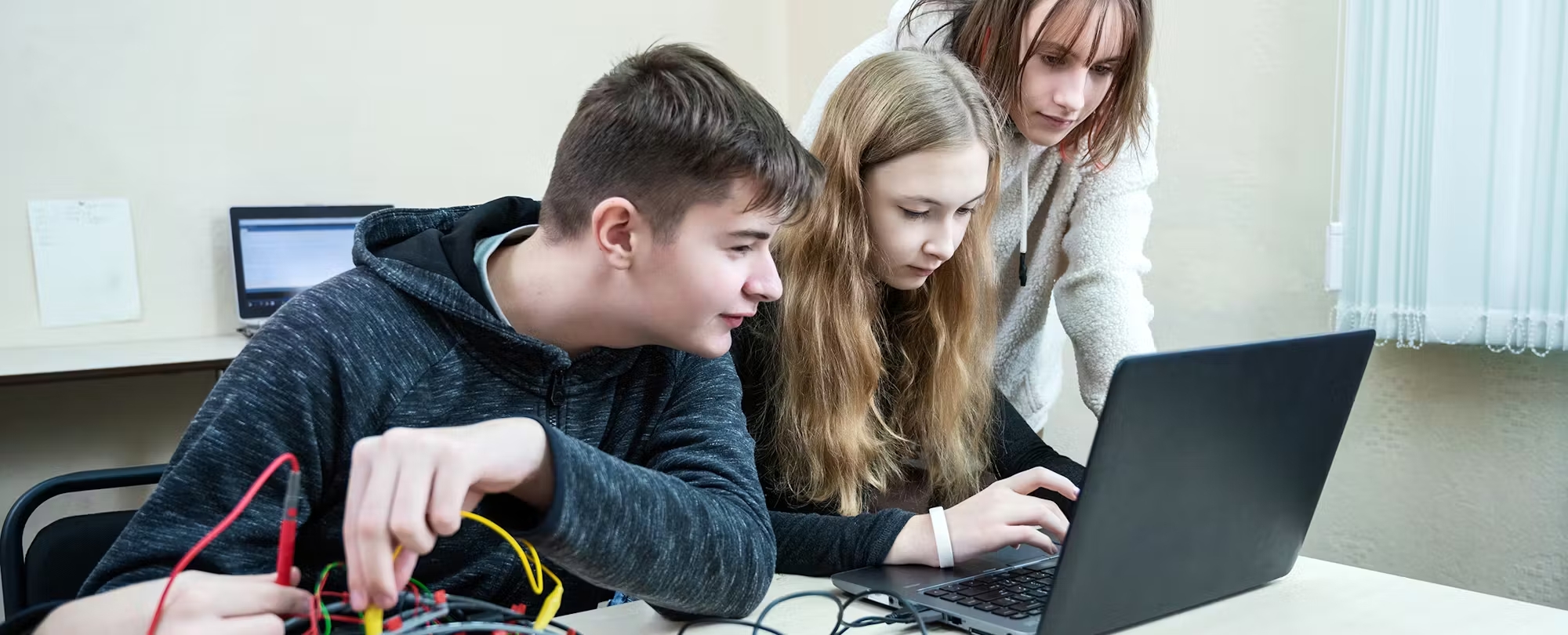
In recent years high schools across the country have been adding computer science courses, and there is a movement to make them ubiquitous. A new study of an unusually rich dataset in Maryland found that such efforts can have a significant impact when it comes to getting more students to go on to careers in coding, and in bringing more diversity to the field.
The study, published as a working paper this month, found that taking a high-quality computer science course in high school increased the chance that the student goes on to major in computer science in college by 10 percentage points, and increased the chance that the student would finish a CS degree program by 5 percentage points.
“It’s not surprising in some ways,” says the lead researcher on the study, Jing Liu. “But we need the numbers so we can show it concretely.”
Liu, who is an assistant professor of education policy at the University of Maryland at College Park, surmises that taking a class in computer science helps some students overcome popular misconceptions about coding.
“It’s like math anxiety — they think they can’t do it,” the professor says of some students. And he knows that feeling firsthand. “I took my first CS course in grad school, and before that I totally thought I was not a CS person,” he says. “Just exposing people to the actual curriculum can overcome fears.”
The study found that taking a computer science course had the greatest impact for female students, Black students and those from low socioeconomic backgrounds. Liu sees that as evidence that increasing CS offerings in high school is helping to address well-known disparities in the tech world. “We need more women and we need more students of color in coding,” he says. “We are far from achieving equity in this space.”
Innovative tech jobs needed to help rural America rebound

February 5, 2024
By Ramona Schindelheim
When the pandemic upended life as we know it and changed how we work, it also sparked notable shifts in rural America, a vital part of our overall economy For one, the population in rural counties grew by one-quarter percent after a decade of either no or slow growth, as more people moved from urban centers during COVID-19.
An estimated 46 million people, or roughly 14%, of the U.S. population currently live in rural areas.
It took until mid-2023 for the rural workforce to almost fully recover from pandemic job losses. There are now 20.2 million workers with a 3.8% unemployment rate, according to the latest estimates provided by economists at the U.S. Department of Agriculture. It’s still below 2019 pre-pandemic levels of 20.4 million rural workers.
Currently, the top employment industries in rural America are government, agriculture, manufacturing, health care, retail, and hospitality.
Demographic Challenges
That push to keep working-age people from leaving rural areas speaks to demographic challenges.
“A lot of people leave. They leave to go to college. There is a lifecycle to this thing,” explains Mark White, clinical associate professor at the Department of Agricultural and Consumer Economics at the University of Illinois, Urbana-Champaign.

